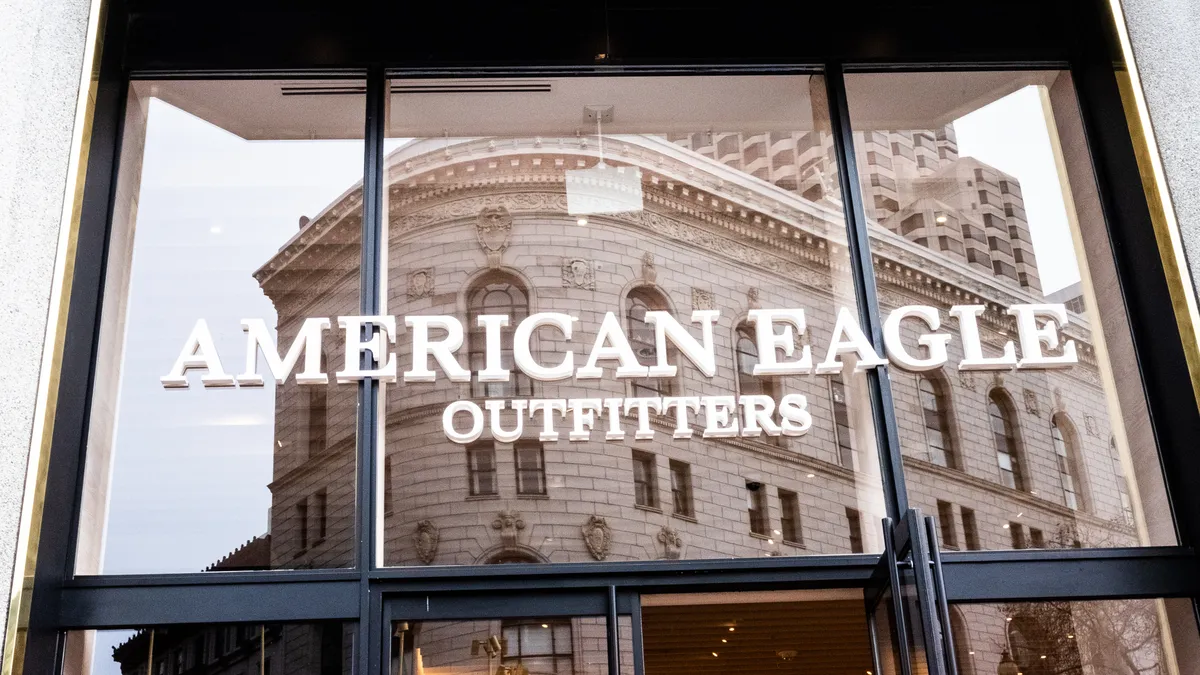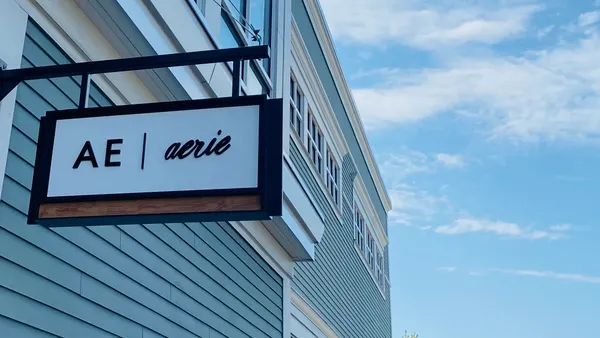American Eagle Outfitters executives on Thursday outlined plans for profitable growth at both its banners — the fast-growing Aerie lingerie brand, where there's a lot of room to grow, and its denim-focused American Eagle brand, where there's less.
Executives seemed upbeat as they detailed lessons learned during a year dominated by a pandemic, which forced some changes in inventory management, supply chain and store operations that will be intentionally applied going forward.
At Aerie, the idea is to grab more market share, which Chief Creative Officer Jennifer Foyle, who now leads both brands after a run of success at the lingerie business, described as an enormous untapped opportunity. Aerie has expanded into swimwear and activewear and continues to add more categories. Upgrades are planned at each label, to feature details and quality that stand out from the competition
Still, Foyle espoused a careful path to growth with an eye to good quality. "I think best practices have gone to the wayside," she told analysts during the company's investors day. "You know, fast fashion made a lot of retailers sloppy. Less is more. It's so important to build a product that can comp last year's product, and that is what we are highly highly focused on, not only in American Eagle but in Aerie as well."
Profits and cost cuts are squarely in focus, especially at American Eagle, where revenue is plateauing. The company overall is aiming for annual revenue growth of 6%, to reach $5.5 billion by 2023, and 15% annual operating income growth to $550 million.
To that end, the retailer is aggressively retooling its American Eagle brand footprint, with plans to close even profitable stores in some areas, bringing a fleet of some 880 closer to about 600 to 700, Chief Operations Officer Michael Rempell said, noting that 85% of the company's 2020 lease renewals are for just one year. CEO Jay Schottenstein said that the short lease terms, 2.8 years on average, give the company a strong negotiating position. Depending on how that goes, as many as 225 American Eagle stores could close by the end of fiscal 2023, with plans to shut 52 this year.
"We expect lower and more durable rents in the future," Schottenstein said. There's flexibility not just in opening or closing stores, but also moving them, thanks to a modular build-out that allows 80% of a store to easily relocate, he said. The company is also testing smaller formats.
Meanwhile, its Aerie brand, which has enjoyed 24 consecutive quarters of double digit increases, with revenue consistently rising at a 25% rate to reach $1 billion this year, will expand in an effort to double revenue to $2 billion. That entails actually opening more Aerie locations, though it will remain a digital-first brand, executives said.
While executives sounded confident in a profit chase based on smaller store counts at American Eagle, given the growth of e-commerce and an assumed sales shift to nearby stores, it's untested, according to BMO analysts, who provided back-of-the-napkin estimates on what closures might yield.
Shutting 210 stores with about 50% productivity could save $390,000 per location, provide $81 million in total EBIT and 220 basis points in margin, if they recoup half their sales elsewhere, they said. Shutting that many at 70% productivity and a 25% recapture rate could contribute about $4 million of EBIT, driving a 70 basis point or so improvement in margin.
"This internal acknowledgement that bigger is not necessarily better is rare in retail, and refreshing," BMO Capital Markets Managing Director Simeon Siegel wrote in a Thursday client note. "That said, we stress, no company has seen profits rise following mass store closures (mostly given disappointing recapture rates)," Siegel added.















